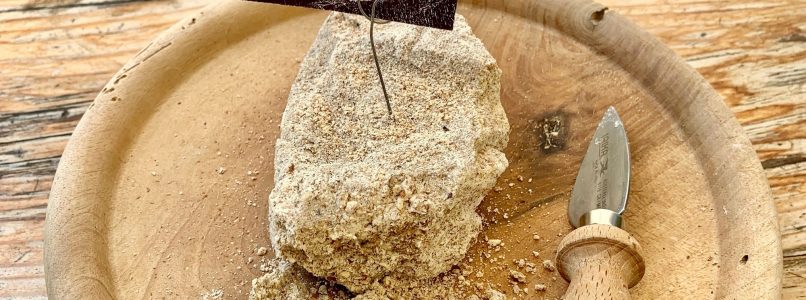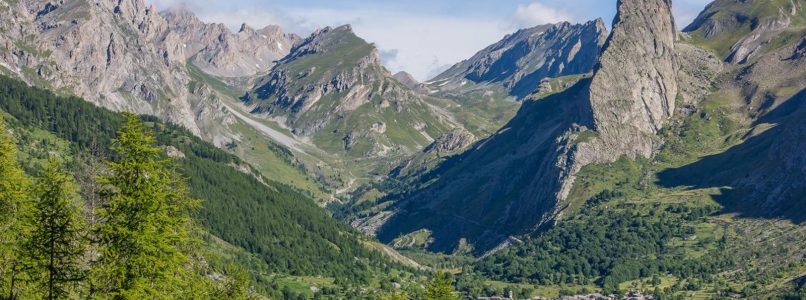Troillet: from a waste product to be given as feed to hens to a refined delicacy in the kitchen
The Aosta Valley is the only region of Italy where olive oil is not produced. As you can easily guess, the climatic conditions do not allow it, the Mediterranean is too far away. Yet this has not prevented the people of Valle d'Aosta from striving over time with what they had at their disposal, such as walnuts.
Walnut oil
The only oil used in Aosta Valley kitchens is butter! Think that in the past they even share salads with us. Seriously, over time, around the seventies and eighties, they really started producing oil starting from hot pressing of walnuts. “Here in the valley we are the ones who adapt to nature, not the other way around”, he tells us Denise Marcoz of the Le Grand Baöu farmhouse. The press can be communal, or home, smaller in size; in any case it is a small production, also because to obtain a liter of oil it takes about 3 kg of clean walnut kernels. Fortunately, in 2004 the Bertolin family, which we had already told you about the Lardo di Arnad, has started an experimentation phase for the pressing of the kernels, in order to continue the production of this emblem of the Aosta Valley cuisine. Thus, after various studies and experiments, the production of walnut oil today is an artisanal activity not only well established, but also of the highest quality: after the autumn harvest period, the walnuts are selected one by one with great care and attention. then dried. The pressing begins in January, when the delicacy we will talk about today is produced; and lasts for a few weeks until bottling. Once ready, walnut oil is used only raw, ideal for flavoring other local specialties such as mocetta. But from walnut oil, in particular from the paste of the squeezing of kernels, a rarity is obtained, almost unknown elsewhere: troillet.
What is the troillet
In the Aosta Valley, the production of walnut oil produces a very particular product, which you will rarely taste elsewhere. It is the troillet, or troliet or troilliet depending on the valley, that is the residue of the pressing, the panel of walnut oil. It looks like a hazelnut-colored dough, with a grainy texture, with a non-invasive flavor, which releases all the essence of taste of the walnuts of the past; yet it is still considered by many to be a leftover, a by-product, so much so that it is often given as feed to hens. But this is not the case for everyone: luckily there are those who use and enhance it in the kitchen, for example to dress salads, especially the slightly more bitter chicory or dandelion ones; or to prepare the troillet pesto, with sage, a real delicacy to spread on croutons, given that pasta is not used much in the Aosta Valley. In the past, however, when there were no biscuits, we ate grated in latte for breakfast, even if in reality, they tell us, the children always stole a little more to take to school as a snack. And actually how to blame them: the troillet is very good, hard to stop! One of the few places where you can find it is at Le Grand Baöu, which in patois means large stable, where Denise Marcoz proposes it as appetizer, already present on the table when you sit down, instead of the bread basket. She also explains that the troillet is also used a lot in desserts, in combination with honey, such as in the biscuits made at the Dupont pastry shop with sugar and egg white, or in the semifreddo of which the recipe follows.
The recipe for parfait with troillet
Ingredients for 6 people
4 yolks
4 egg whites
2.4 cl of juniper flavored grappa
300 g of fresh cream
50 g of troillet
1.5 g of chopped wild fennel
100 g of sugar
For the vanilla cream
500 ml of whole milk
150 g of granulated sugar
25 g of flour 00
4 yolks
1 sachet of vanilla
5 g of lemon zest
Method
Beat the egg yolks with sugar and grappa. Finely chop the trolliet and add the wild fennel, then mix with the beaten egg yolks.
Whip the cream and egg whites until stiff, mix everything gently and pour the mixture into a mold.
Finally put it in a freezer for two hours.
For the vanilla cream
Boil the milk with half the sugar, the lemon zest and the vanilla. Separately, beat the egg yolks with the remaining sugar, add the hot milk, bring it to 90 ° C and let it cool in water and ice.
Serve the semifreddo decorated with the vanilla cream, cream and a red fruit.


